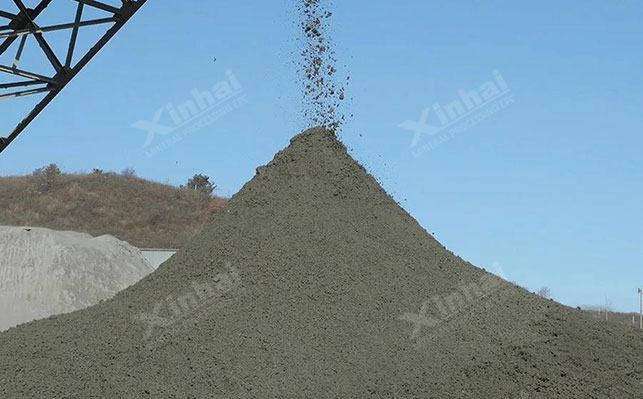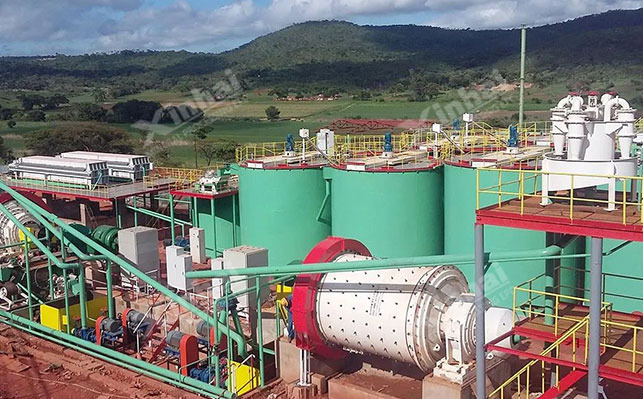Gold mining is a crucial industry that contributes significantly to the global economy by providing valuable raw materials. However, it also generates substantial amounts of waste, known as tailings, which pose significant environmental challenges. Effective management of gold mine tailings is essential to minimize environmental impact and ensure sustainable mining practices. This article explores various methods for managing gold mine tailings, including their advantages and potential environmental benefits.

Gold mine tailings are the by-products left after the extraction of gold from ore. These tailings typically consist of finely ground rock particles, water, and residual chemicals used during the extraction process, such as cyanide and mercury. If not properly managed, tailings can lead to soil and water contamination, posing severe risks to ecosystems and human health.
Traditional methods of tailings disposal include tailings ponds, dam impoundments, and dry stacking. Each of these methods has its own set of advantages and disadvantages.
2.1 Tailings Ponds and Dam Impoundments
Tailings ponds, also known as tailings storage facilities (TSFs), are large, engineered structures designed to store tailings slurry. Dam impoundments are similar but typically involve constructing a dam to contain the tailings.
Advantages:
Provides a relatively simple and cost-effective means of storing large volumes of tailings.
Allows for the settlement of solid particles, which can help reduce the mobility of contaminants.
Disadvantages:
High risk of dam failure, which can lead to catastrophic environmental disasters.
Continuous monitoring and maintenance are required to ensure the structural integrity of the facility.
Potential for seepage of contaminants into groundwater.
2.2 Dry Stacking
Dry stacking involves dewatering tailings to create a dry, stackable material that can be placed in a compacted storage area.
Advantages:
Reduces the risk of dam failure and subsequent environmental disasters.
Lower potential for groundwater contamination due to reduced seepage.
Smaller footprint compared to traditional tailings ponds.
Disadvantages:
Higher initial capital and operational costs due to the need for dewatering equipment.
Limited by climatic conditions; may not be suitable in areas with high rainfall.

Advancements in technology and increased environmental awareness have led to the development of innovative tailings management techniques aimed at reducing environmental impact and enhancing sustainability.
3.1 Paste Backfill
Paste backfill involves mixing dewatered tailings with cement or other binding agents to create a paste-like material that can be used to fill underground voids created by mining activities.
Advantages:
Reduces surface storage requirements by utilizing underground spaces.
Enhances ground stability and reduces the risk of subsidence.
Minimizes the exposure of tailings to environmental factors, reducing potential contamination.
Disadvantages:
Higher costs associated with the addition of binding agents and transportation of paste.
Requires careful engineering and monitoring to ensure the stability of filled voids.
3.2 Thickened Tailings
Thickened tailings technology involves increasing the solids content of tailings slurry to create a thickened, semi-solid material that can be transported and deposited more efficiently.
Advantages:
Reduces water usage and the volume of tailings storage required.
Lowers the risk of dam failure and seepage.
Improved geotechnical stability of deposited tailings.
Disadvantages:
Requires advanced thickening equipment and technology, leading to higher costs.
Potential challenges in managing and transporting thickened tailings.
3.3 Geopolymerization
Geopolymerization is an emerging technology that involves converting tailings into a stable, solid material through a chemical process that forms a geopolymer.
Advantages:
Immobilizes contaminants, reducing the risk of environmental pollution.
Produces a stable, solid material that can be used in construction or other applications.
Potential for valorizing waste materials and creating economic value.
Disadvantages:
Still in the experimental and early commercial stages; long-term performance data is limited.
Requires specialized knowledge and technology to implement effectively.

Biological treatment methods utilize microorganisms to degrade or stabilize contaminants in tailings, offering a more environmentally friendly approach to tailings management.
4.1 Phytoremediation
Phytoremediation involves using plants to absorb, accumulate, and detoxify contaminants from tailings.
Advantages:
Cost-effective and sustainable; plants can be harvested and processed to recover metals.
Enhances the aesthetic value of tailings storage areas by creating green cover.
Reduces erosion and dust generation from tailings surfaces.
Disadvantages:
Slow process that may take several growing seasons to achieve significant results.
Effectiveness varies depending on the type of contaminants and plant species used.
Requires ongoing management and monitoring to ensure the health of phytoremediation systems.
4.2 Bioremediation
Bioremediation uses bacteria and other microorganisms to break down or stabilize contaminants in tailings.
Advantages:
Natural and environmentally friendly method for contaminant degradation.
Can be tailored to target specific contaminants through the selection of appropriate microbial strains.
Potential for complete mineralization of organic contaminants.
Disadvantages:
Requires specific environmental conditions (e.g., pH, temperature) for optimal microbial activity.
May be less effective for inorganic contaminants or highly toxic compounds.
Monitoring and management of microbial communities are necessary to ensure ongoing effectiveness.
Reprocessing and reuse of tailings involve extracting additional valuable minerals from tailings and finding alternative uses for tailings material.
5.1 Tailings Reprocessing
Tailings reprocessing involves re-treating tailings to extract remaining valuable minerals using advanced extraction technologies.
Advantages:
Reduces the volume of tailings requiring storage, thus mitigating environmental impact.
Generates additional economic value from previously discarded material.
Improves overall resource efficiency and sustainability.
Disadvantages:
Requires significant investment in technology and infrastructure.
May generate additional waste streams that need to be managed.
Limited by the economic viability of extracting remaining minerals.
5.2 Alternative Uses for Tailings
Tailings can be used in various industrial applications, such as construction materials, road base, and cement production.
Advantages:
Converts waste material into valuable products, reducing the need for new raw materials.
Minimizes the environmental impact of tailings storage.
Supports the circular economy by promoting resource reuse and recycling.
Disadvantages:
Requires thorough testing to ensure the safety and suitability of tailings for intended applications.
Market demand for products made from tailings may be limited.
Potential regulatory and environmental challenges related to the reuse of waste materials.
Effective management of gold mine tailings must consider environmental and regulatory requirements to minimize adverse impacts and ensure compliance with local, national, and international standards.
6.1 Environmental Impact Assessment
Conducting thorough environmental impact assessments (EIAs) is essential to identify potential risks and develop mitigation strategies for tailings management projects.
Advantages:
Provides a comprehensive understanding of environmental risks and impacts.
Informs decision-making and helps develop effective management plans.
Enhances stakeholder engagement and community acceptance.
Disadvantages:
Time-consuming and potentially costly process.
Requires collaboration with various stakeholders and regulatory authorities.
May delay project timelines and implementation.
6.2 Regulatory Compliance
Compliance with environmental regulations and standards is critical to ensure responsible tailings management and avoid legal and financial penalties.
Advantages:
Ensures operations meet legal and environmental standards.
Protects the company’s reputation and social license to operate.
Minimizes the risk of environmental incidents and associated liabilities.
Disadvantages:
Regulatory requirements can be complex and vary across jurisdictions.
Compliance may require significant investment in monitoring, reporting, and management systems.
Ongoing regulatory changes may necessitate continuous adaptation and updates to management practices.
Effective management of gold mine tailings is essential to minimize environmental impact and promote sustainable mining practices. Traditional methods such as tailings ponds and dry stacking continue to be widely used, but innovative techniques like paste backfill, thickened tailings, and geopolymerization offer promising alternatives. Biological treatment methods and the reprocessing and reuse of tailings further contribute to environmentally friendly and economically viable solutions. Ensuring compliance with environmental regulations and conducting thorough environmental impact assessments are critical components of successful tailings management. By adopting a combination of these methods, the mining industry can achieve more sustainable and responsible management of gold mine tailings.